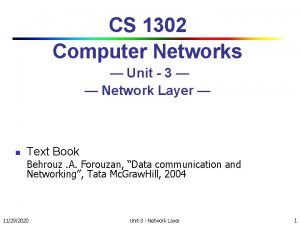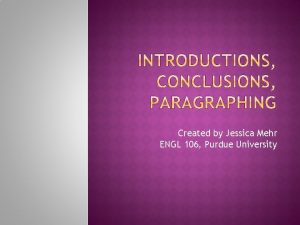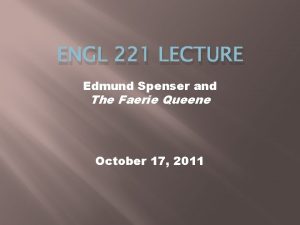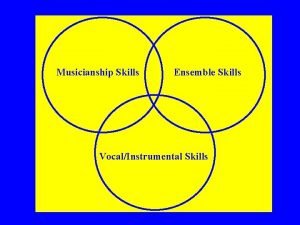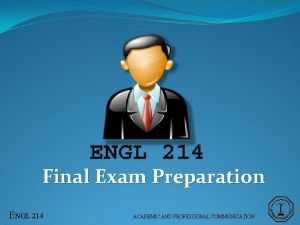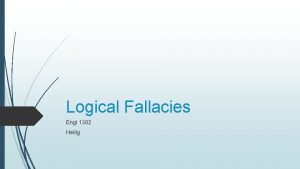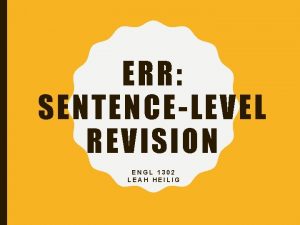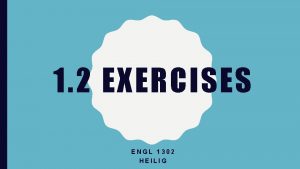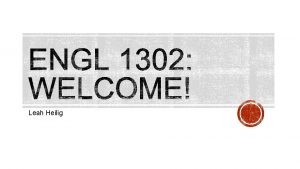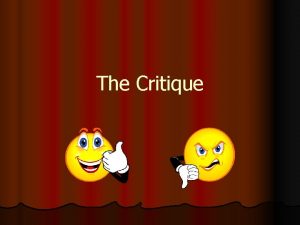PEER CRITIQUE ENGL 1302 HEILIG REFRESHER WHAT IS








- Slides: 8

PEER CRITIQUE ENGL 1302 HEILIG

REFRESHER: WHAT IS PEER CRITIQUE? • Part of the process of writing • Involves someone (in this case a classmate) reading, reviewing, and critiquing your work • A critique should: – Critically analyze a piece of writing – Point out specific examples from the work – Offer constructive criticism • Constructive criticism: – Discusses why something isn’t working – Offers ways to fix the problem

THINGS TO REMEMBER • Be honest. If something isn’t working tell the writer • Be professional. Remember that this is someone’s hard work • Don’t be afraid to say entire sections need redoing/overhauling • Refer directly back to the draft as often as you can.

STRATEGIES: REFER TO THE TEXT Don’t Say: The student didn’t integrate sources well Do Say: In the “Barefoot Running” section, the research from Cheskin wasn’t well integrated… Why: This lets the student know exactly where they need to revise. “Student didn’t integrate sources well” doesn’t give them an example of where their integration isn’t working.

STRATEGIES: JUSTIFY YOUR REASONING Don’t Say: The thesis statement was weak. Do Say: The thesis statement was weak because it didn’t provide a forecast statement or let us know the main topic was about barefoot running. Why: Remember that when you offer feedback, you’re essentially arguing that the student needs to change their work. Giving your reasoning shows the student (and your grader) that you’ve thought about why their work needs revision, and can also help them better understand your feedback.

STRATEGIES: OFFER SUGGESTIONS Don’t Say: The student’s citations are wrong. Do Say: The student forgot to include the page numbers in their citations Why: It’s likely the student doesn’t know they’re doing something incorrectly—therefore, saying something is “wrong” isn’t going to help them identify the problem.

STRATEGIES: BE PROFESSIONAL Don’t Say: The student didn’t spend enough time on this assignment/The student didn’t even try Do Say: The draft could benefit from another round of revision or proofreading/The draft doesn’t meet the expectations of the assignment Why: No one writes at the same skill level. Length or quality of a draft isn’t always an indication of a students’ work ethic. Part of this assignment is to gauge your ability to be a professional communicator—treat other students (and their work) with respect. Keep the critique focused on the work, not the student.

OTHER RESOURCES • Chapter 4 b in The St. Martin’s Handbook • Pages 124 + 126 in First-Year Writing • Double check the Assignment Checklist (posted on the course blog)


